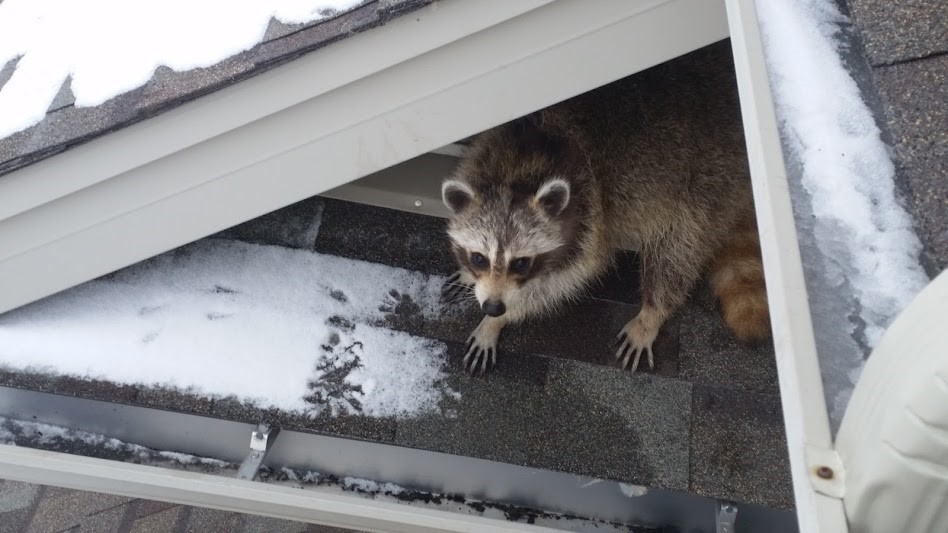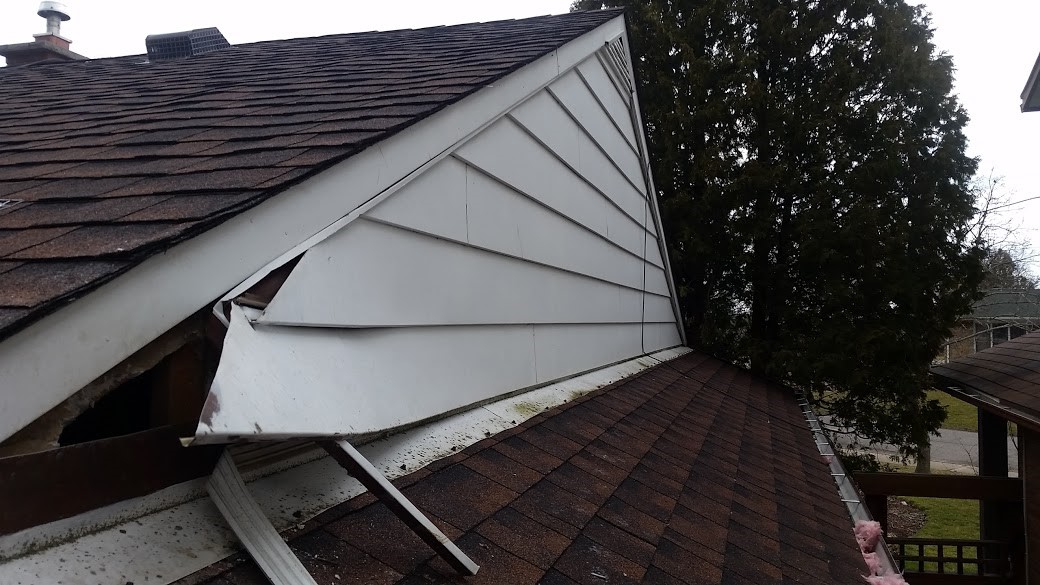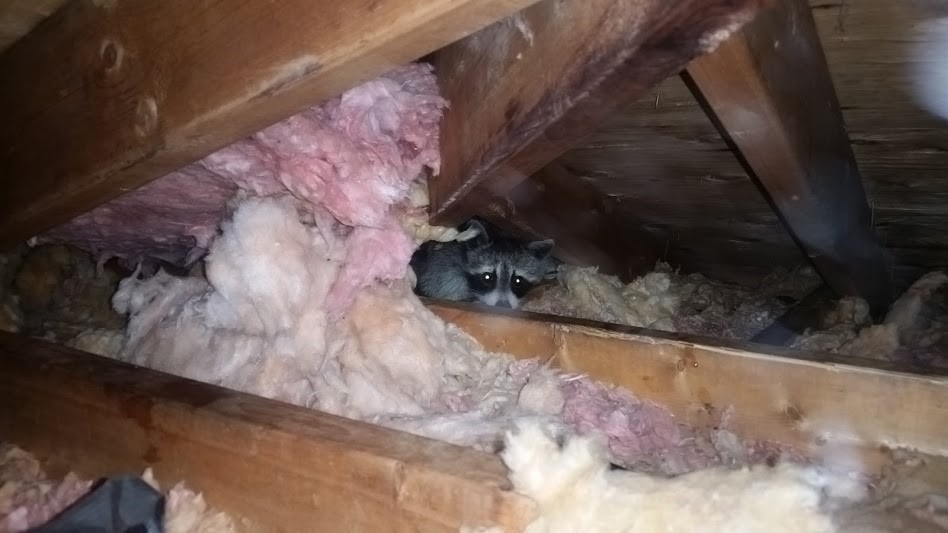Raccoons will eat anything. An opportunistic diet means they can survive and prepare for winter by eating whatever they can find. When it’s cold they generally consume acorns, fruit and garbage. But, they will take advantage of any food source and establish dens close to a reliable outlet.
They will build dens in hollow trees, attics and chimneys
With the colder weather raccoons often seek out warm places to construct dens. In the wild, hollow trees are usually the most common site. However, they are quite resourceful with finding shelter. Raccoons have been known to take over other animal’s underground homes, caves and buildings. Sometimes they will even den with others to stay warm.

A raccoon high up on a roof
Raccoons are also attracted to man-made structures. Houses have consistent temperature and are generally attached to reliable food sources. They mostly build dens in attics and chimneys getting into buildings through open holes to the outside.
During the winter they enter a state called torpor
Unlike a full hibernation, torpor allows raccoons to sleep for extended periods of time reducing the amount of energy they need to survive. The body temperature will lower and a rise in insulin controls the raccoon’s blood sugar. When the weather gets warmer raccoons will forage for food, but always return to their den. Torpor is similar to hibernation, but keeps them alert to predators and food.
Raccoons will be able to sleep longer in colder climates. They grow a thick winter coat and increase the amount of stored fat. These changes allow them to prepare for winter and remain comfortable.

Raccoon damage to aluminum siding
They will often mate between January and March
During this period male raccoons search for females. The gestation period for raccoons is approximately 63 days. A litter of raccoon babies usually contains between two and six babies. The mortality rate is quite high for larger litters. This is why a safe and warm den is crucial to their survival.
For a mother raccoon, your home’s attic or chimney is considered a safe place for her babies. Once babies are born they can cause a lot of damage to your attic and the process for wildlife removal services becomes more complicated.

Trampled attic insulation can lead to increased energy bills, moisture problems and ice dams




